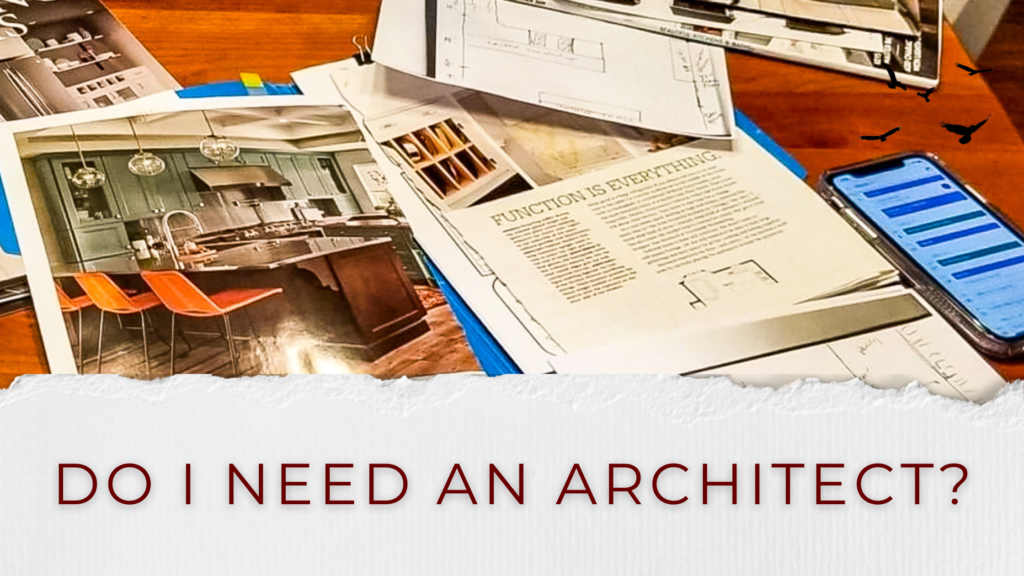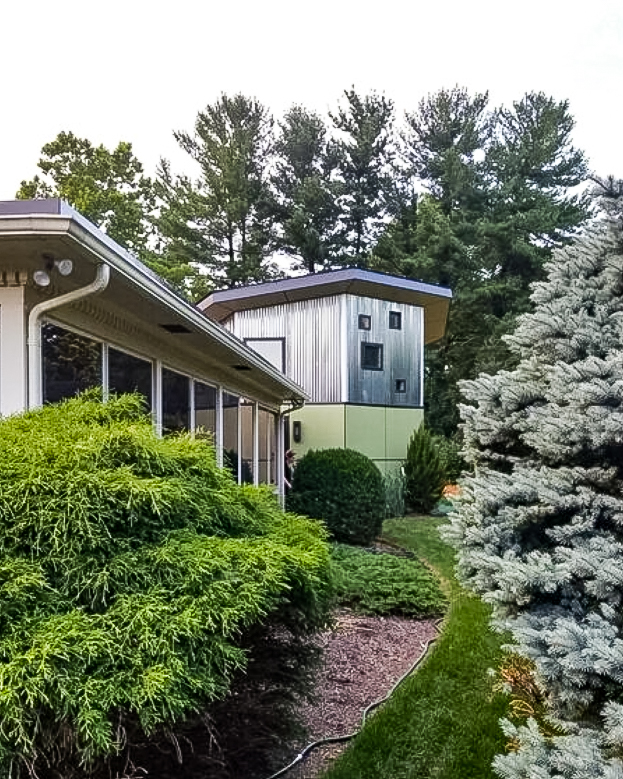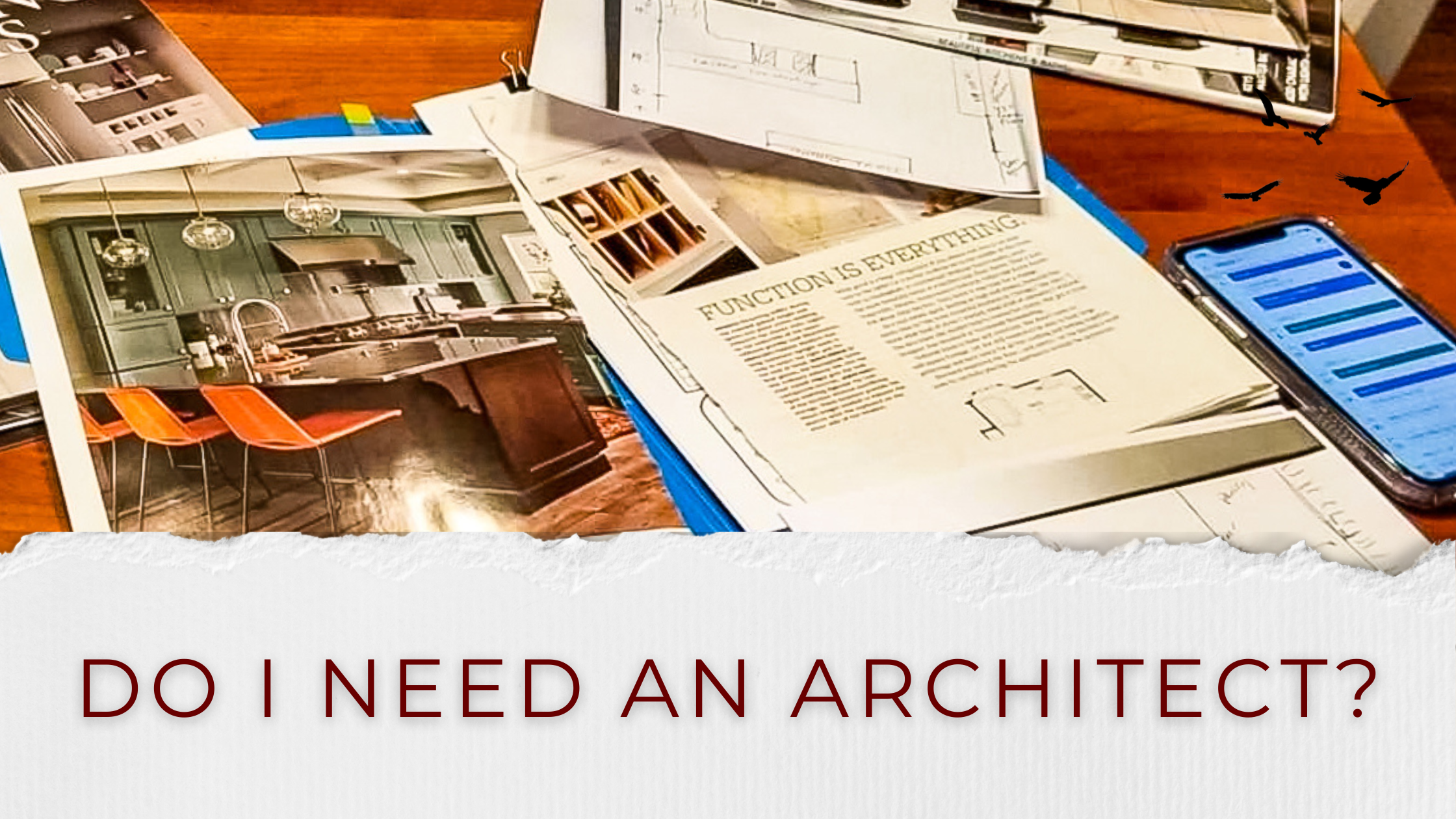Have no clue where to start? You probably need an Architect.

To cut right to the chase, having an Architect on your team ensures that you have an advocate for your vision. They’re there to support you, mitigate stressful situations, and guarantee your project will ultimately be successful.

”I like to use the term puzzle instead of problem. Each project is a different puzzle with different pieces. These pieces include, but are not limited to: aging in place, budget, limitations based on lot size/zoning, existing construction, HOA [and] historic district guidelines.”
Kerri Ann, DFC-LMA Architectural Designer
Who should you hire first: A Builder, An Architect, or An Interior Designer
- An Architect develops the design for the plans (or drawings) with you, the owner, for a new building or the remodel of an existing space. They design to fit your specific needs and work within the parameters of the site, your budget, and timeline. They will advocate for your needs, while also working to adhere to building and zoning codes, throughout the design, drawing, and permitting process.
- The builder is responsible for overseeing the construction and implementation of the Architect’s plans. Most builders do not provide designs or drawings for your space.
- If you choose to engage an Interior Designer, they work primarily in the interior of the space to further bring functionality and expression of the space. Architects often recommend working directly with a designer for “fixtures and furnishings”.
“If your home remodel will cost beyond 5% of your house’s value and/or involves major structural changes, experts recommend working with an architect to create the design. This is largely because such projects are complicated and will benefit greatly from an expert’s input at every stage. Getting things wrong here can result in serious legal, financial, and safety consequences — so it’s worth getting it right.”
UrDesign

What To Expect - The Architecture Design Process Explained
Pre-Design
Schematic Design
“[A client] had a small second home above a resort on the side of the mountain… I started with interior remodeling but they wanted to add a Great room and a two car garage which would have access to their remodeled kitchen, since they were approaching retirement age… The finished project totally transformed the house, inside and out.”
Don, DFC-LMA Architectural Designer
The goal in this collaboration is to come to what we call a “design intent” as approved by you, the client. This intent is documented in the drawings as a Schematic Design Pricing Package that includes small scaled plans and elevations with notes, and often exterior 3D.

Jurisdiction Review
Pricing The Project
“In many cases, homeowners choose from among several contractors they've asked to submit bids on the job. The architect can help you prepare bidding documents as well as invitations to bid and instructions to bidders.”
The Washington Architectural Foundation
Design Development
Construction Documents
Permit Drawings
Construction Administration
As your architect, we advocate for you and your design and can answer questions on-site that you or your builder have while putting the pieces into place.
We can be hands-on throughout the process as much as you, the owner, wants to ask questions.

“Sometimes I solve problems owners don't even realize they have! For residential, it's working out what they really need and how to make it all *fit* in the space they have to work with… For all my clients, it's finding the clever solutions to make a space you live or work in as comfortable as possible.”
Leesa, DFC-LMA Architectural Designer
So, really, what does it cost?
- implements your design wishes so you can have confidence in the big picture — the plan — and the stress reduction which comes with that.
- thoughtfully designs your project to meet budget parameters and/or eco-friendly design and passive solar design.
- provides code compliant documents to protect you and your property.
- communicates with all the members of the Dream Team on your behalf.




